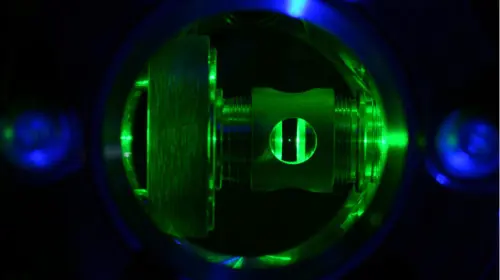Revolutionizing Quantum Experiments With A New Cold Source

In the intriguing realm of quantum physics, atoms display a dual nature, acting like both particles and waves simultaneously. This peculiar behavior, often described as being 'in two places at once,' is unique to the quantum world. To witness such phenomena in larger objects, these objects must be cooled to near absolute zero. At this temperature, movement is limited to quantum fluctuations, which are the minute vibrations of empty space.
For the first time, researchers have managed to achieve this by using a laser beam to trap a nanoparticle, causing it to levitate within a vacuum chamber. This chamber eliminates air, preventing the particle from heating up through collisions. Subsequently, the nanoparticle is positioned between two opposing mirrors, forming a cavity that aids in cooling its motion.
Professor Carlos Gonzalez-Ballestero from the Institute of Theoretical Physics at TU Wien elaborates, "By adjusting the cavity mirrors precisely, the laser can be made to draw energy from the nanoparticle. This process slows the particle's spin until it reaches the quantum ground state." This remarkable achievement is noted for the unprecedented purity of the quantum state, signifying the object is mostly unaffected by environmental factors.
This level of precision and control paves the way for experimental tests of quantum mechanics on a much larger scale, unlocking potential technological advancements. Larger quantum objects possess heightened sensitivity to specific forces, making them ideal candidates for developing advanced quantum sensors.
Potential applications of these levitated nanoparticle-based sensors include creating a new form of precise navigation that operates independently of global satellite systems. Additionally, they could serve as early warning systems for natural events like earthquakes and volcanic eruptions, as well as tools for mapping underground landscapes.